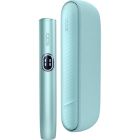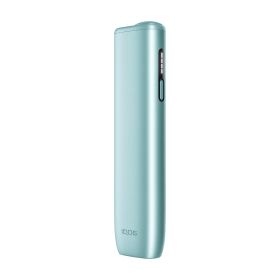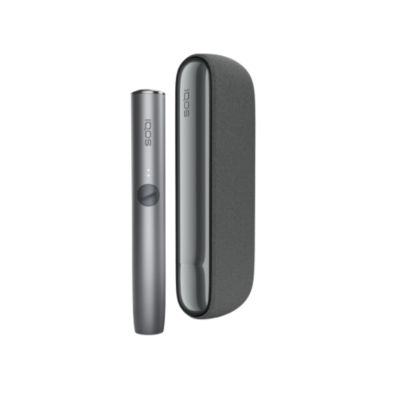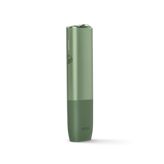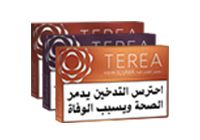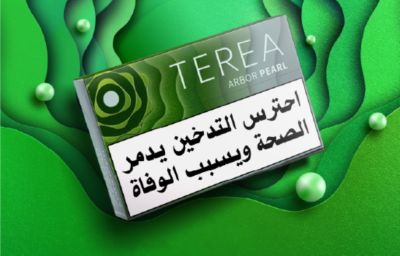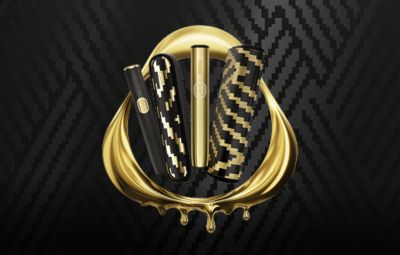Tobacco Explained: Origins, Uses, and Types of Tobacco Products
Tobacco is one of the most widely recognised crops in the world, grown across multiple regions and used in a variety of ways. The tobacco plant, most commonly Nicotiana tabacum, produces leaves that are harvested, dried, and processed into many different forms. From traditional smoking to modern heated tobacco, tobacco has shaped cultures, industries, and consumer habits for centuries.
In Egypt, tobacco use remains a strong part of social and cultural traditions, particularly through shisha (hookah) pipes. At the same time, modern alternatives such as heated tobacco products are gaining popularity among adult users seeking different experiences.
The Tobacco Plant
The history of tobacco begins with the tobacco plant (raw leaf). Over time, large-scale tobacco farming transformed into an organised tobacco crop industry, where farmers developed techniques for curing, fermenting, and refining the leaves. Today, this process plays a central role in global tobacco production, shaping the different types of tobacco products we recognise.
At the core of this production are tobacco leaves, which undergo careful processing. Once harvested, farmers often use tobacco leaves drying techniques in barns to preserve flavour and strength. These methods produce dry tobacco leaves, which are later blended or pressed depending on the intended use. Some traditions maintain the use of whole leaf tobacco, valued for its authenticity and natural aroma. In recent years, demand for organic tobacco has grown, focusing on cultivation without synthetic chemicals, adding another layer of diversity to the market.
However, the handling of these leaves has always been shaped by regional and international tobacco laws, which regulate how products are manufactured and distributed. Despite variations in practice, the significance of whole leaf tobacco and dry tobacco leaves remains clear — they are the building blocks of both traditional and modern products of the tobacco field.
Before the leaves move to processing, a careful tobacco leaves inspection is carried out to assess quality, texture, and curing consistency, ensuring that only well-prepared leaves make it into final tobacco products.
Tobacco Absolute
Beyond traditional tobacco varieties, the tobacco plant is also used in industries outside of smoking and vaping. One example is tobacco absolute, a concentrated extract obtained from cured and fermented tobacco leaves through solvent extraction.
How Tobacco Is Used Around the World
Tobacco varieties are not limited to cigarettes. While cigarettes remain the most common form, tobacco leaves are used in cigars, cigarillos, chewing tobacco, and even dipping tobacco. Each category of product reflects different methods of tobacco production, curing, and consumption.
Beyond smoking, tobacco has also been applied in surprising ways. For example, tobacco water has been used historically as a natural insecticide, and researchers in the tobacco field have explored the potential of tobacco production for biofuels. These diverse uses highlight the versatility of the tobacco plant.
Types of Tobacco Products
The variety of tobacco products available today is wide, reflecting both traditional consumption methods and modern alternatives. Broadly, they can be grouped into three categories: combustible, non-combustible, and modern smoke-free alternatives. Each category is based on how the tobacco is consumed and whether or not combustion (burning) takes place.
Combustible Tobacco Products
Combustible tobacco varieties are those that involve burning tobacco leaves, which creates smoke and results in environmental tobacco smoke.
Examples include:
- Cigarettes – Manufactured sticks made from shredded tobacco wrapped in paper.
- Cigar or Hand Rolled Cigar – Rolled bundles of dried and fermented tobacco.
- Cigarillos – Smaller versions of cigars, often machine-made.
- Shisha (Hookah) – A water pipe system that uses a tobacco mix (maassel) often flavoured with molasses and fruit essences.
Some cigar manufacturers and niche producers experiment with a natural cigarette blend, combining whole leaf tobacco and minimal additives to create a flavour profile closer to traditional hand-rolled products.
For more details on how shisha compares with modern products, read our guide on e-shisha versus vapes.
Non-Combustible Tobacco Products
Non-combustible tobacco products are consumed without burning. Instead of producing smoke, they are chewed, placed in the mouth, or inhaled through different methods. These have been part of tobacco use traditions in different cultures for centuries.
Examples include:
- Chewing Tobacco – Processed cured tobacco that is chewed to release flavour and nicotine.
- Dipping Tobacco – Finely ground tobacco placed between the lip and gum.
- Snus – Moist powdered tobacco, often in sachets, traditionally popular in Sweden.
Modern Smoke-Free Alternatives
Modern smoke-free alternatives use electronic devices to heat tobacco rather than burn it, creating an aerosol instead of smoke. These products reflect a shift in the tobacco industry.
Examples include:
- Heated Tobacco Products – Devices like IQOS that use HEETS tobacco sticks made from processed tobacco leaves. Find out more about heated tobacco options.
- Heat-Not-Burn Devices – Electronic systems that warm tobacco units without combustion.
- Hybrid Products – Devices that combine elements of vaping technology with heated tobacco formats.
What Are Heated Tobacco Products?
Heated tobacco products, also known as heat-not-burn products, use technology to warm processed tobacco rather than set it alight. Devices like IQOS ILUMA are electronic heating devices that pair with HEETS tobacco sticks. These sticks are made from reconstituted tobacco sheets, designed to deliver tobacco taste without producing ash or smoke.
Unlike artificial cigarettes or herbal cigarettes, heated tobacco devices rely on real tobacco units. They provide an experience based on heating tobacco, creating a nicotine-containing aerosol rather than smoke. If you’re interested in how these devices differ from regular cigarettes, read our heated tobacco vs cigarettes comparison.
Tobacco in Shisha Culture
Across the Middle East, shisha (hookah) remains one of the most popular ways of consuming tobacco. A shisha pipe typically uses a mixture called maassel, made of tobacco leaves, molasses, glycerol, and flavourings. Tobacco production for shisha includes a wide variety of flavours, from classic tobacco notes to fruit blends.
While alternative products such as heated tobacco are now emerging, the cultural role of shisha remains significant in the tobacco field.
Discover more about how heated tobacco compares to shisha and cigarettes.
Tobacco and Modern Alternatives
As the tobacco market continues to evolve, new forms of tobacco products have been introduced. Heated tobacco devices represent a new category of electronic devices, distinct from vaping and electronic cigarettes. Unlike e-liquids, which are based on flavour concentrates, heated tobacco relies on real processed leaves.
These alternatives coexist with traditional options such as shisha pipes, cigars, and even herbal cigarettes. While the tobacco industry has historically focused on combustible products, modern developments now include electronic heating systems, reconstituted tobacco sheets, and advanced induction heating. Learn how heated tobacco works here.
Secondhand Tobacco Smoke
Secondhand tobacco smoke, often referred to as environmental tobacco smoke, is the mixture of smoke released from burning tobacco products and the smoke exhaled by individuals actively using them. It contains particles and gases produced when tobacco leaves are combusted in cigarettes, cigars, or shisha.
Unlike heated tobacco products or smoke-free alternatives, which do not involve burning, secondhand tobacco smoke results directly from combustion. This makes it not only a source of unpleasant odour that lingers on clothes, hair, and indoor spaces, but also a contributor to indoor air pollution. Over time, awareness of secondhand tobacco smoke has influenced global tobacco laws, restricting where combustible tobacco products can be used, especially in enclosed public areas, to reduce exposure for non-users.
FAQs
Do Cigarettes Expire?
Cigarettes don’t technically expire in the way food products do, but they can go stale over time. When exposed to air, light, or humidity, the tobacco inside dries out and loses flavour, while the paper and filter can absorb odours.
Stale cigarettes may taste harsher, burn unevenly, and provide a less satisfying experience. Manufacturers often print a production date, and many users note that cigarettes kept for more than a year show clear changes in quality.
What Are Herbal Cigarettes?
Herbal cigarettes are products made without tobacco, often containing a mix of smokable herbs such as mint, clove, lemongrass, or other plant blends. In Egypt and other markets, herbal cigarettes are sometimes marketed as alternatives to traditional tobacco, though they still produce smoke when burned. While they don’t contain tobacco or nicotine, they can still release toxins through combustion, so they aren’t risk-free. Find out whether e-cigarettes contain tobacco or not.
What Are the Types of Tobacco Bags?
Tobacco bags are small pouches containing cut tobacco, often designed for chewing or placing between the lip and gum. The most common types include moist and dry snuff. Some products are flavoured or sweetened, offering variety in taste. Tobacco bags are a form of non-combustible tobacco product and are consumed without burning, making them distinct from cigarettes, cigars, or shisha.
Browse the IQOS ILUMA ONE KIT BUNDLE or the IQOS ILUMA I PRIME KIT BUNDLE.
IQOS is not risk-free and provides nicotine, which is addictive. Only for use by adults.


